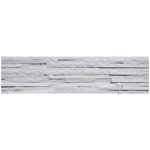Introduction
Stone veneer walls have become a popular choice for homeowners and designers looking to add a touch of elegance and sophistication to their spaces. With their natural beauty, durability, and versatility, stone veneer walls offer a wide range of benefits for both interior and exterior applications. In this article, we will explore the various aspects of stone veneer walls, from their history and manufacturing process to their installation and maintenance, as well as the different design options available.
History of Stone Veneer Walls
The use of stone as a building material dates back thousands of years, with ancient civilizations such as the Egyptians, Greeks, and Romans incorporating stone into their architectural designs. Stone veneer walls, however, represent a more modern innovation that has gained popularity in recent decades. The concept of using thin slices of natural stone to mimic the appearance of full-thickness stone has revolutionized the construction and design industries, allowing for the creation of stunning stone walls at a fraction of the cost and weight of traditional stone masonry.
Manufacturing Process
Stone veneer is typically made from natural stone materials such as slate, limestone, or quartzite that are quarried and cut into thin slices. These slices are then adhered to a backing material such as fiberglass, cement, or polyurethane to create the veneer panels. The panels can be further enhanced with pigments and textures to mimic the natural variations found in real stone. The manufacturing process for stone veneer walls ensures consistency in color, texture, and shape, making it easier to achieve a cohesive look in your design.
Benefits of Stone Veneer Walls
There are numerous benefits to choosing stone veneer walls for your home or commercial space. One of the main advantages is the aesthetic appeal of natural stone, which adds a sense of warmth and sophistication to any room. Stone veneer walls are also highly durable and can withstand the elements, making them suitable for both interior and exterior applications. Additionally, stone veneer is lightweight and easy to install, reducing the time and labor required for construction compared to traditional stone masonry.
Design Options
Stone veneer walls come in a wide variety of styles, colors, and textures, allowing for endless design possibilities. Whether you prefer the rustic charm of stacked stone or the sleek elegance of cut stone, there is a stone veneer option to suit your taste and complement your space. You can also mix and match different stone veneer styles to create a unique and custom look that reflects your personal style. From accent walls to fireplace surrounds, stone veneer walls can be used in a variety of applications to enhance the overall design of your space.
Installation Process
Installing stone veneer walls is a relatively straightforward process that can be done by DIY enthusiasts or professionals. The first step is to prepare the surface by cleaning and priming it to ensure proper adhesion of the veneer panels. Next, the panels are attached to the wall using mortar or adhesive, with spacers used to create consistent joint widths. Once the panels are in place, any gaps or imperfections can be filled with grout or caulk to create a seamless finish. Proper installation is crucial to ensure the longevity and stability of your stone veneer walls.
Maintenance and Care

Stone veneer walls are relatively low maintenance compared to traditional stone masonry, but they still require regular care to keep them looking their best. To clean stone veneer walls, simply use a mild detergent and water solution to remove dirt and debris. Avoid using harsh chemicals or abrasive cleaners, as these can damage the stone veneer surface. It is also important to inspect your stone veneer walls periodically for any signs of damage or wear and tear, such as cracks or loose panels, and address any issues promptly to prevent further damage.
Cost Considerations
The cost of stone veneer walls can vary depending on the type of stone, design complexity, and installation method. While stone veneer is generally more affordable than full-thickness stone, it is still a premium building material that may require a significant investment. However, the long-term benefits of stone veneer walls, such as increased property value and durability, can outweigh the initial cost. It is important to consider your budget and design goals when choosing stone veneer for your project and to work with a reputable supplier and installer to ensure a quality result.
Conclusion
Stone veneer walls offer a beautiful and practical solution for enhancing the appearance of your home or commercial space. With Visit Your URL , durability, and versatility, stone veneer walls provide a timeless and sophisticated look that can elevate any design. Whether you are looking to create a cozy fireplace surround, a dramatic accent wall, or a stunning exterior façade, stone veneer walls can help you achieve the desired aesthetic. By understanding the history, manufacturing process, installation methods, and maintenance requirements of stone veneer walls, you can make an informed decision about incorporating this versatile building material into your next design project.
